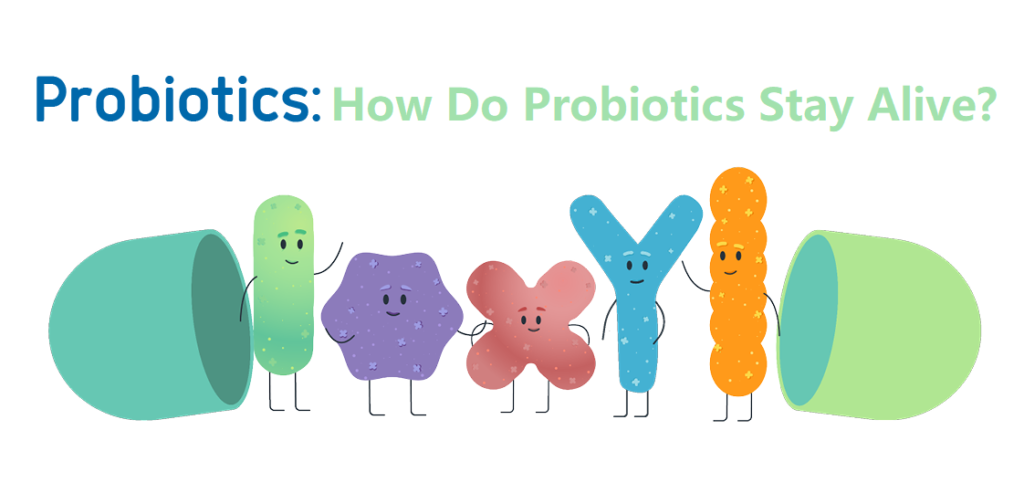“Is it really possible for probiotics to stay alive when they are dried and in a capsule?” people often ask. The answer is unequivocally positive. Consuming live microbes to promote health is not a novel concept. Élie Metchnikoff, a disciple of Louis Pasteur, the father of microbiology, linked the consumption of fermented milk containing live lactobacilli to a longer and healthier life in Bulgarian peasants in 1907. This concept was later captured by the concept of probiotics: live microorganisms that, when administered in sufficient quantities, provide a health benefit to the host. probioticseverything.com probiotics stay alive
Four simple and practical criteria can be used to determine whether specific microorganism strains qualify as probiotics for use in foods and dietary supplements. Probiotic strains must be adequately characterized, safe for the intended use, supported by at least one human clinical trial demonstrating efficacy, and alive in the product at an effective dose throughout the shelf life. One of the most important characteristics of probiotics is that they are alive at the time of consumption. probioticseverything.com probiotics stay alive
Animals and plants are distinguished from inorganic matter by the condition of life. The capacity for growth, reproduction, and metabolic activity is all part of the definition of life. Certain environmental conditions must be met in order for life to be sustained, but these vary depending on the organism. Water and nutrients are essential for microbes, as are an appropriate temperature and pH (acidity), and the absence of growth inhibitors. Certain conditions, however, can be manipulated to produce a state in which growth is put on “pause,” but the microbe remains alive. We can’t imagine ourselves in a situation in which life can be sustained even in the absence of metabolic activity, but microbes can. probioticseverything.com probiotics stay alive
We find probiotics stay alive in foods (yogurts, fermented milk, fruit juices, cereal bars) or food supplements (capsules, compressed pills) in a “hibernation” state, which is characterized by no growth, reproduction, or metabolic activity while waiting for the right conditions to return to full metabolic life. This happens when microbes enter the gut, which has the right temperature, nutrient availability, a lack of inhibitors, adequate acidity, and water. In the case of microbes, this results in a decoupling of life and metabolic activity. Probiotics stay alive, but in a dormant state, even if they have no metabolic activity. probioticseverything.com
When you open a probiotic food supplement, you’ll most likely find a white dry powder. Due to a technological process known as freeze-drying or lyophilization, this is how probiotics stay alive in their dormant state. Freeze-drying is a two-step process in which cells are quickly frozen at extremely low temperatures (-40 to -70°C or less, for example, using liquid nitrogen). The frozen water is then removed using a gentle evaporation process at low pressure and temperature known as sublimation. This process removes the majority of the water from around and inside the cells, effectively putting the microbes to sleep. Scientists use water activity to determine how much water is available to microbes. This technological metric ranges from 0 (no water) to 1 (pure water). Growth is hampered by water activity close to zero. Freeze-drying reduces water activity in food supplements to less than 0.2, ensuring that no metabolic activity occurs during the product’s shelf life. probioticseverything.com
Therefore, probiotics stay alive in food supplements in their own way. This is also true of probiotics found in foods like cereal bars. The low temperature at which these products are stored, combined in some cases (yogurts, fermented milk, fruit juices) with the low pH (or high acidity), limits metabolic activity in food products with water activities closer to 1. The combination of low temperature and acidity is effective in keeping probiotic cells dormant, preventing any metabolic activity that could cause cell stress and death over the product’s shelf life. Even if factors that impair metabolic activity are tightly controlled, some cell death may occur during the shelf life of probiotics in the products that deliver them. In this case, responsible manufacturers will make sure to include enough probiotic cells to ensure that the required number of viable cells are present throughout the product’s shelf life. probioticseverything.com
The number of viable cells is commonly expressed as a certain number of colony forming units, or “CFU,” in both probiotic foods and food supplements. Because probiotics are present in high concentrations, the number of viable cells in a capsule or a serving of yogurt can easily reach the billions. Microbiologists must make serial dilutions of the probiotic product to be able to count such large numbers of cells. They will then place a small drop of a dilution on the surface of a Petri dish containing a probiotic culture medium. Each probiotic cell (or clump of cells) will grow in place, forming a visible colony that can be counted and observed with the naked eye. probioticseverything.com
In brief, probiotics stay alive in foods and supplements, but they exist in a different state of life than higher organisms, which have constant metabolic activity. Probiotics’ metabolic activity is stopped during shelf life by freeze-drying (food supplements) or a combination of low temperature and acidity (yogurts and fruit juices, for example). When these microbes enter our gut and find the right combination of nutrients, temperature, acidity, and water, they can resume active growth and deliver their health benefits. probioticseverything.com

